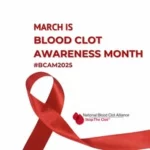What is the post-phlebitic or post-thrombotic syndrome?
Approximately 30 percent of people who experience DVT develop chronic symptoms as a consequence of permanent injury to veins and their valves. These symptoms may not emerge right away. In fact, after one to two years, only 10 to 20 percent of people experience these symptoms; after five years, however, 20 to 30 percent do.
Chronic symptoms include swelling, pain, and discoloration of the skin. A rusty discoloration of the skin, caused by iron deposits from old blood, is often the first sign, followed by chronic swelling. In severe cases, the skin can break down, allowing an ulcer (open sore) to form. After one year, only 2 to 3 percent of people develop these ulcers; by contrast, after five years, as many as 10 to 20 percent may suffer from such an ulcer on the legs. Not surprisingly, post-phlebitic (post-thrombotic) syndrome is more likely to develop after DVT that was associated with symptoms as opposed to a DVT that was diagnosed by imaging alone.




